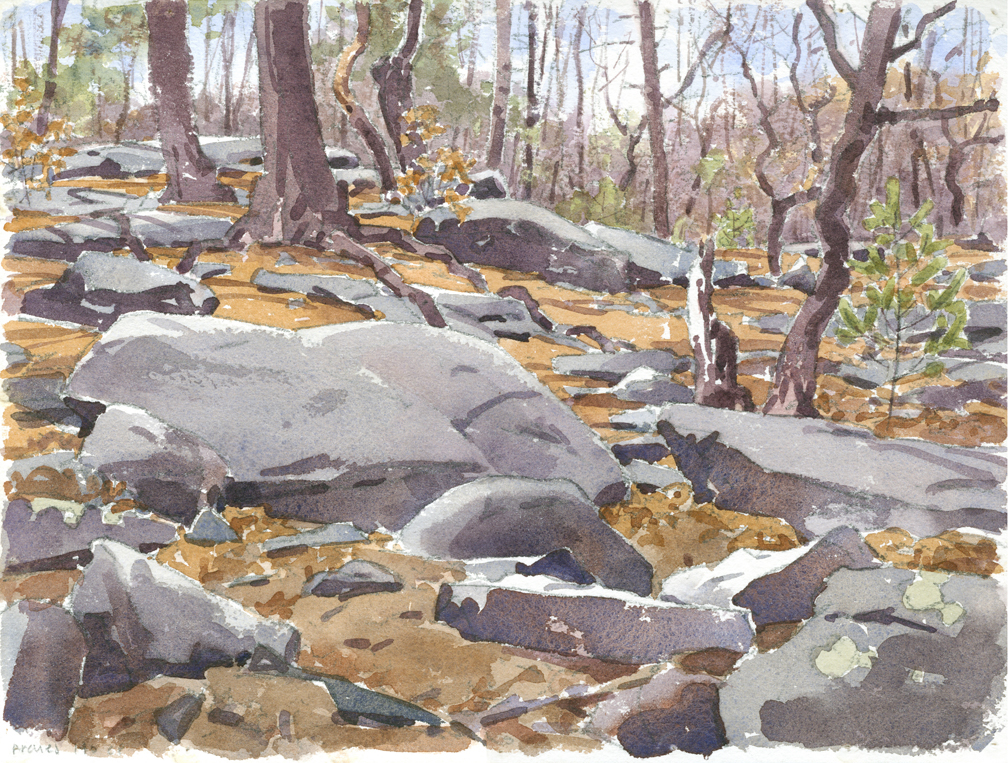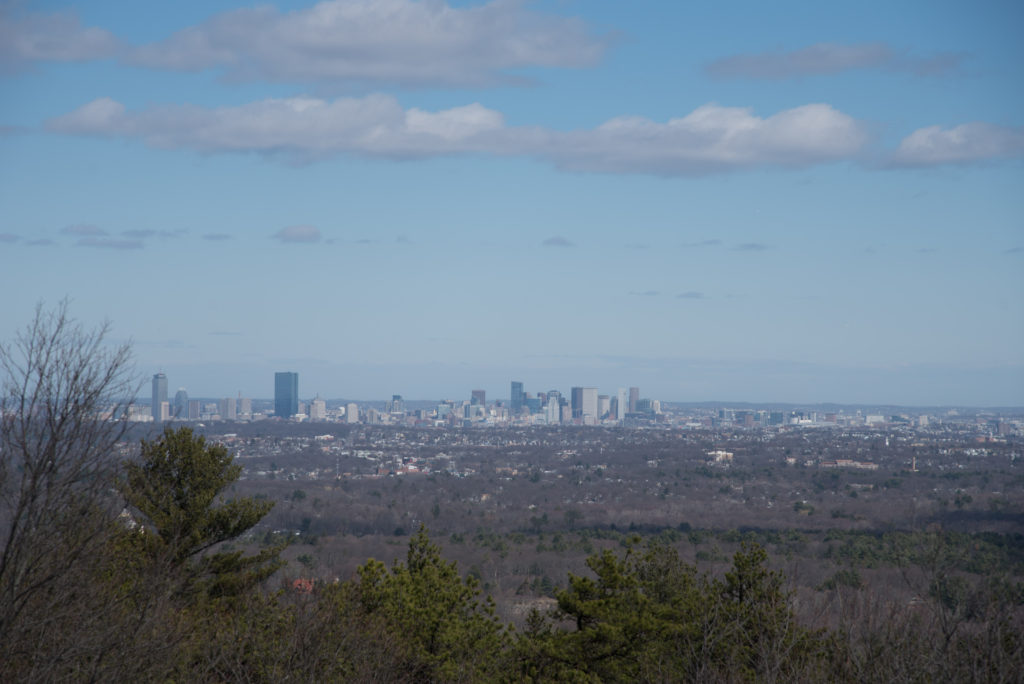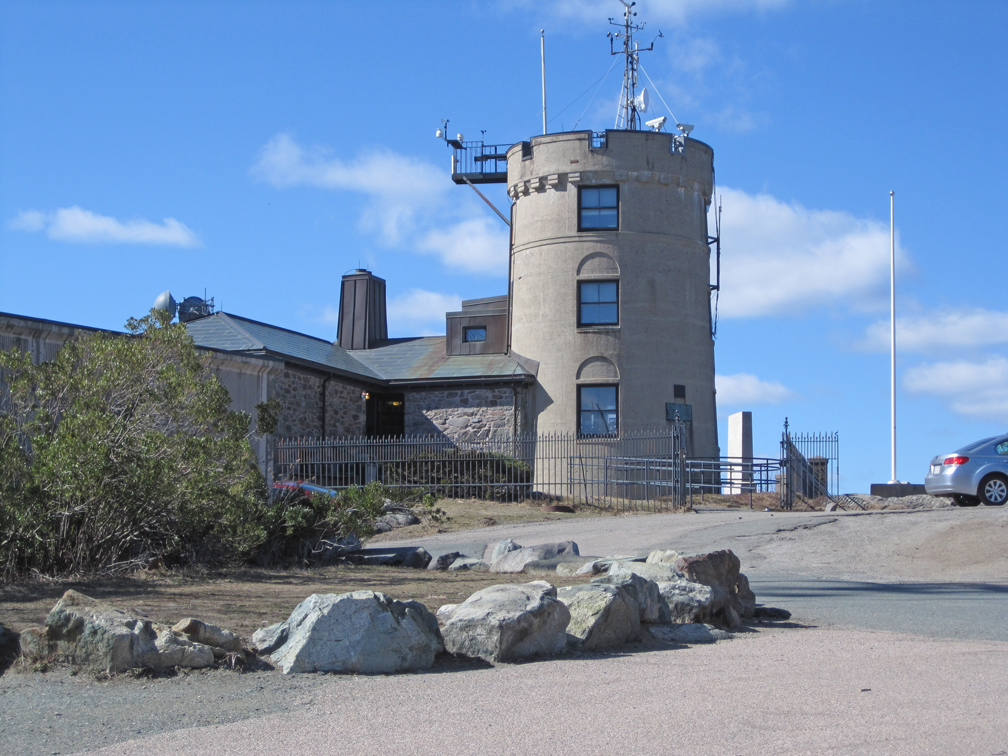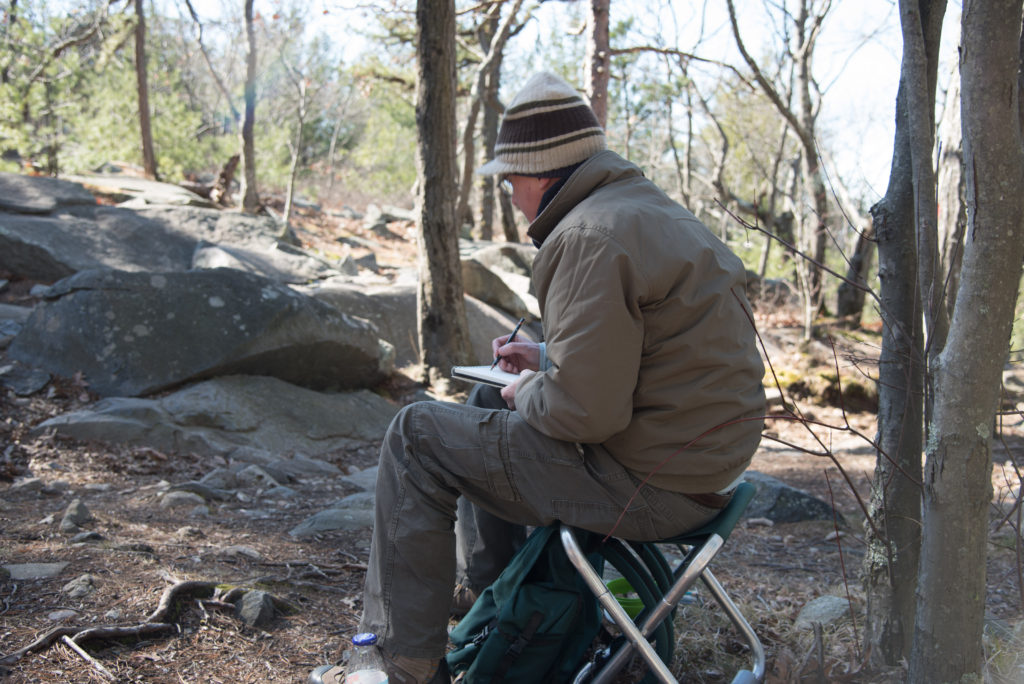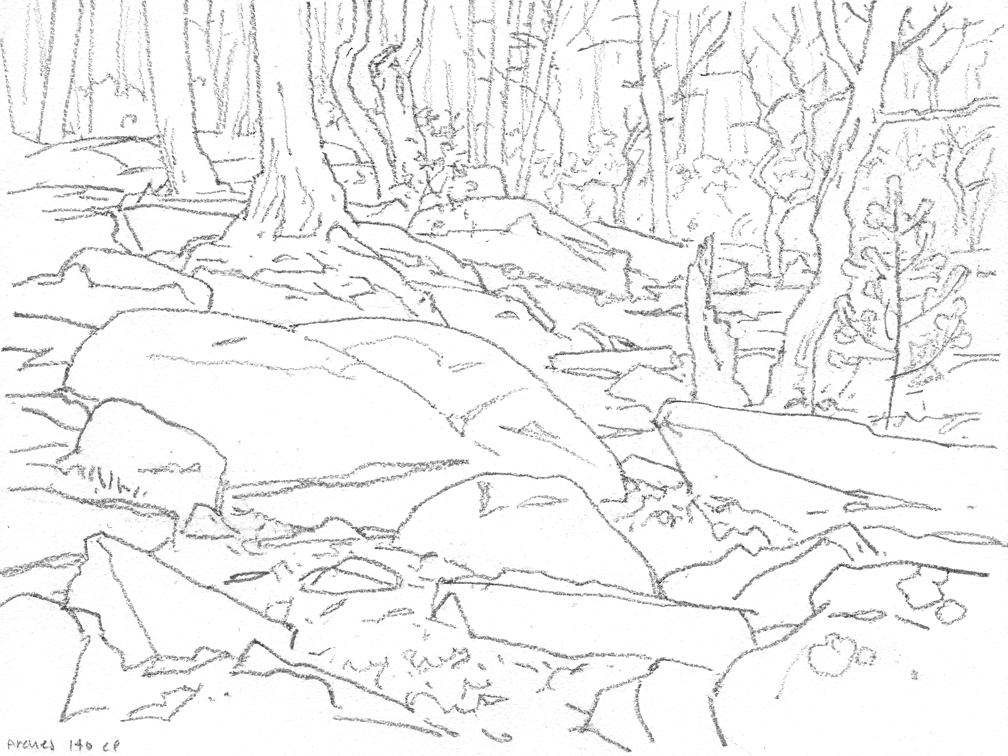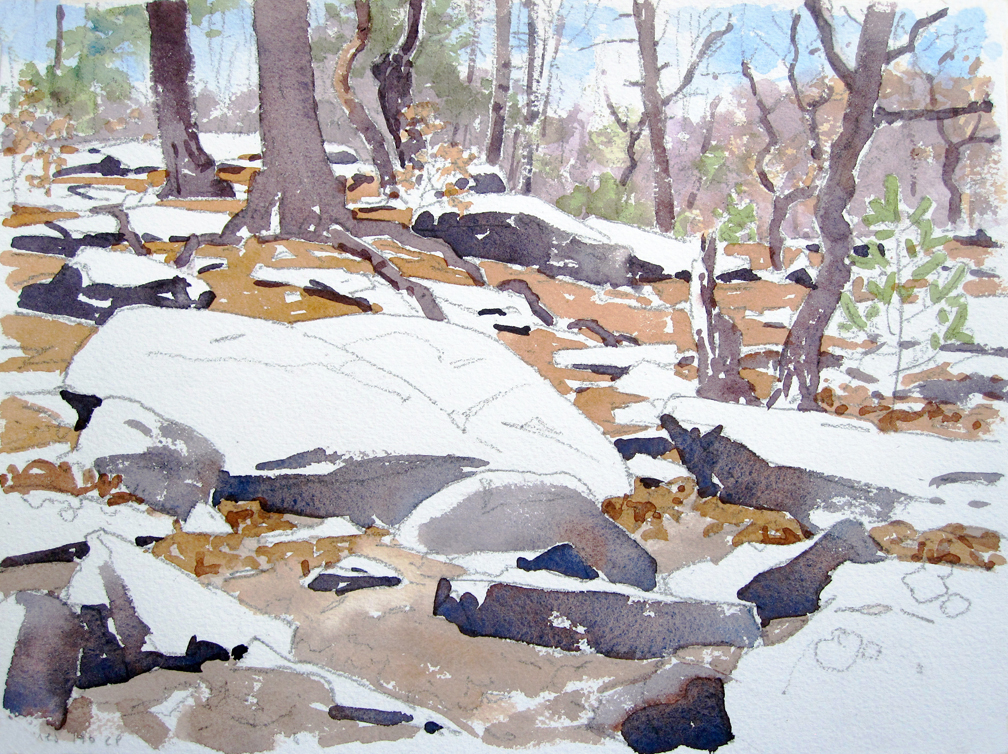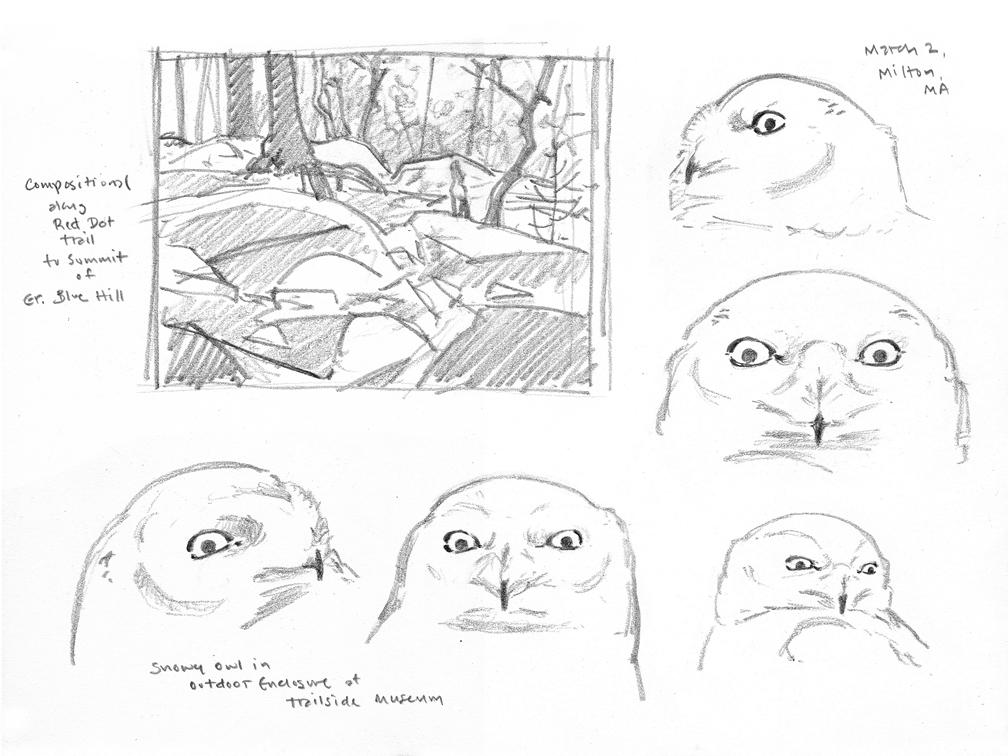
March 2/3, 2017
Blue Hills Trailside Museum, Milton
My second day at the Blue Hills Trailside Museum is colder, with temperatures remaining in the 30s all day. It’s sunny, however, so I do some more drawing at the snowy owl enclosure. The two birds are again huddled on the ground in the rear corner of the pen.
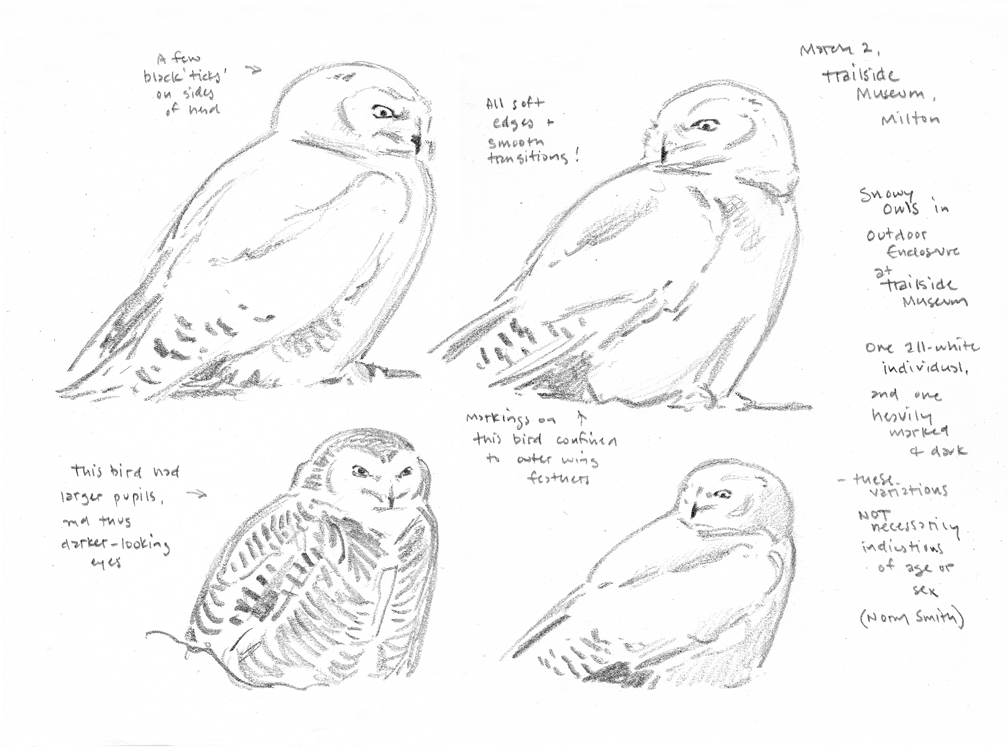
Snowy Owl sketchbook studies, pencil, 9″ x 12″
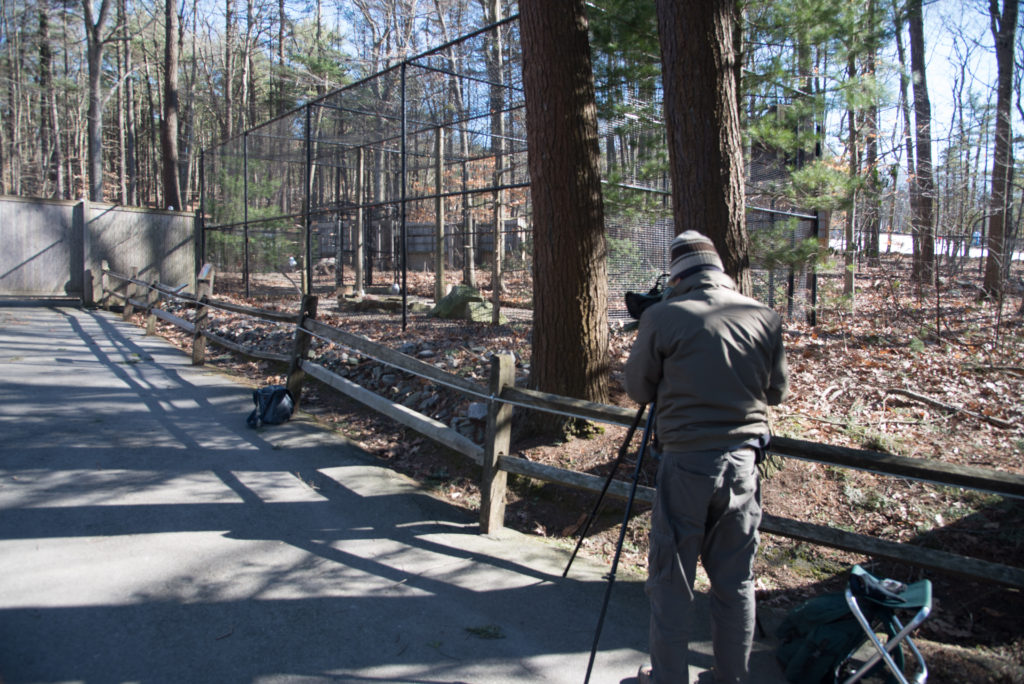
drawing at the snowy owl enclosure
It’s early in the day, and I’m the only one in the little zoo behind the visitor center. Suddenly, I hear a great flap of wings and turn to see a wild turkey vulture alighting on the nearby turkey vulture enclosure. It hops around atop the cage and peers down at the “prisoner” within. I wonder what has attracted the wild bird: curiosity? food? sex? It’s a handsome specimen – much more colorful and sleek than the captive bird – and I turn my attention to it. I take some photos and start a drawing, but another (human) visitor arrives and scares off the wild bird.
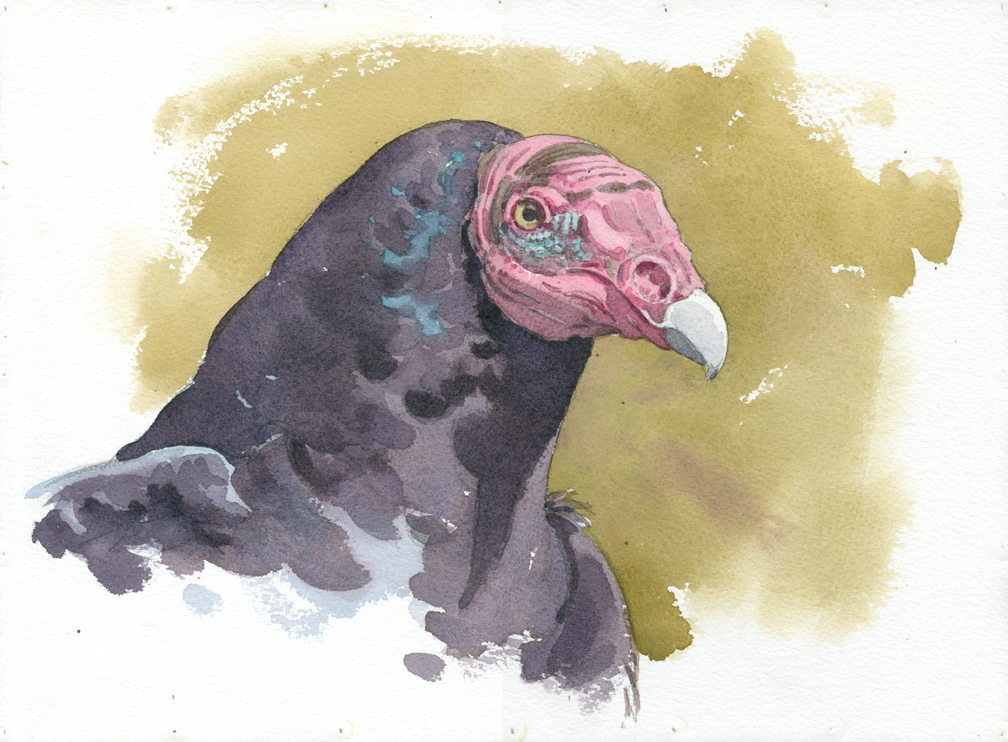
Turkey Vulture Head Study, watercolor on Arches cold-press, 10.25″ x 14.25″
We go inside to warm up, and meet director Norm Smith. He is busy getting ready to host an important international meeting of scientist and researchers focused on snowy owls. Norm has been conducting his own research on these birds for nearly twenty years. He was the first to put satellite transmitters on wintering snowy owls in an attempt to better understand their seasonal movements in New England. His research has called into question many long-held assumptions about the owls that move south into Massachusetts in winter. Needless to say, the snowy owl is a bird of special significance at the Trailside Museum!
Norm introduces us to staff members in charge of the live animals at Trailside, and we get a tour of the lower level. Some of the animals are recovering from injuries and will eventually be released, while others are permanent residents who, for various reasons cannot be returned to the wild.
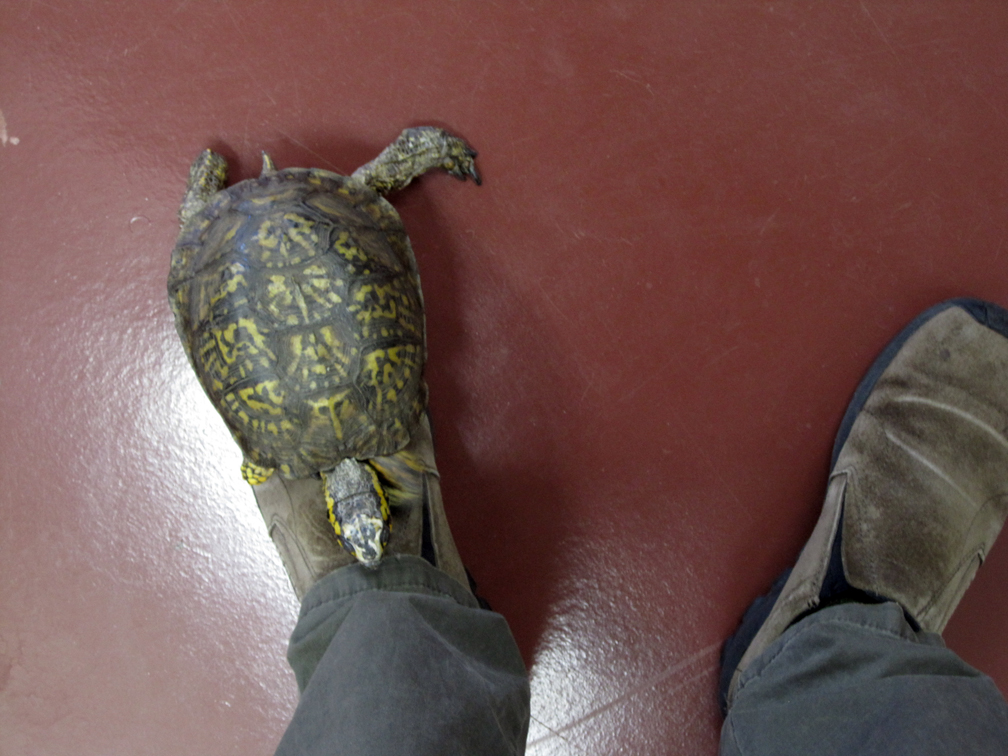
A raven and a box turtle have the run of the place, and follow us around as we take our tour. The box turtle develops a special fondness for my shoe!
The staff generously offers to set up any of the animals for us to work with, so I select a gray phase screech-owl, which is taken from its cage and placed on a padded perch in the center of a low table.
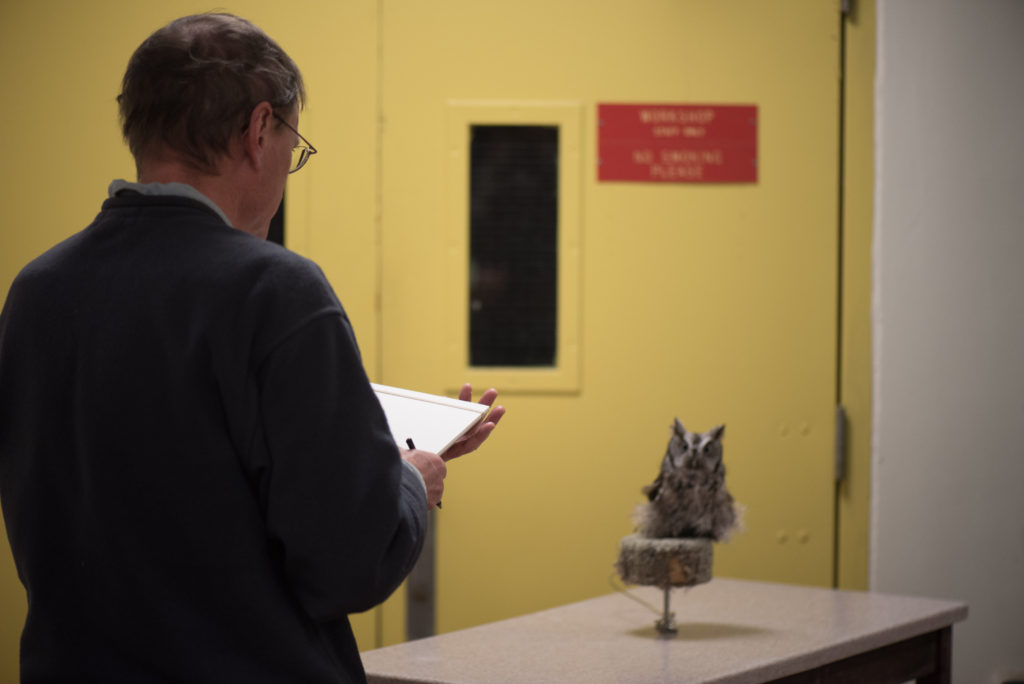
Sean and I get to work, and the owl proves a good model, sitting quietly and studying US! The owl seems especially fascinated when I take out my paints and brushes! (Thanks, Sean, for your photos in this post!)
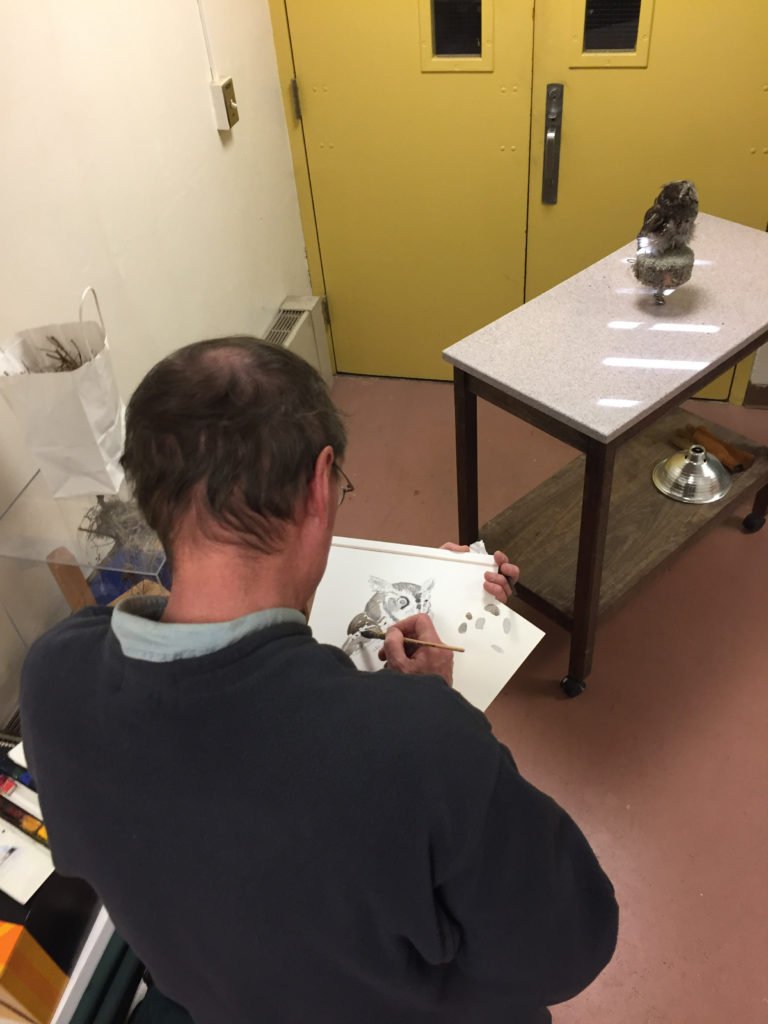
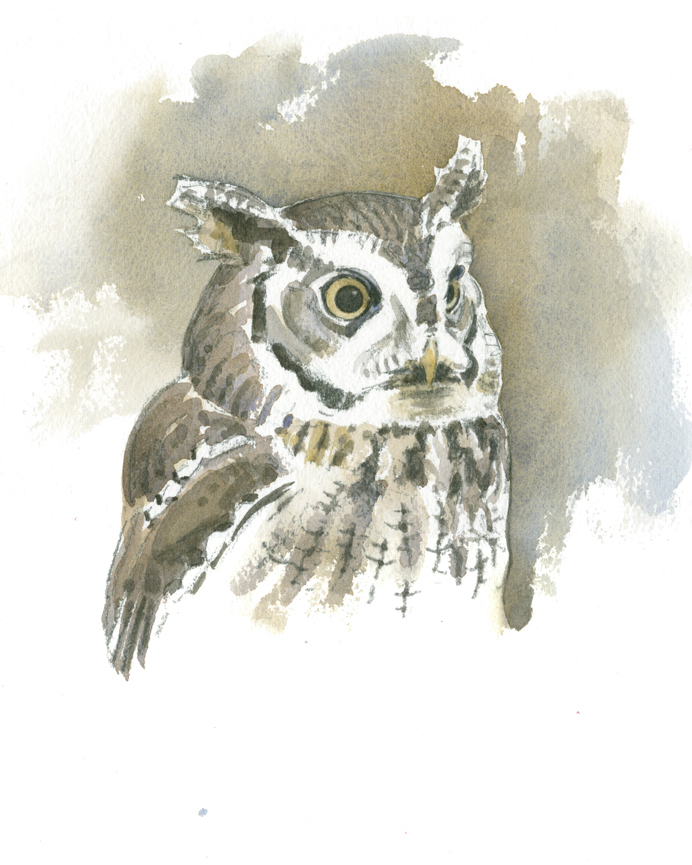
Gray Phase Screech-Owl, watercolor on Arches cold-press, 11″ x 9″
Upstairs in the museum, a variety of live animals are on display. One enclosure holds two timber rattlesnakes: one very dark and the other predominantly golden brown.
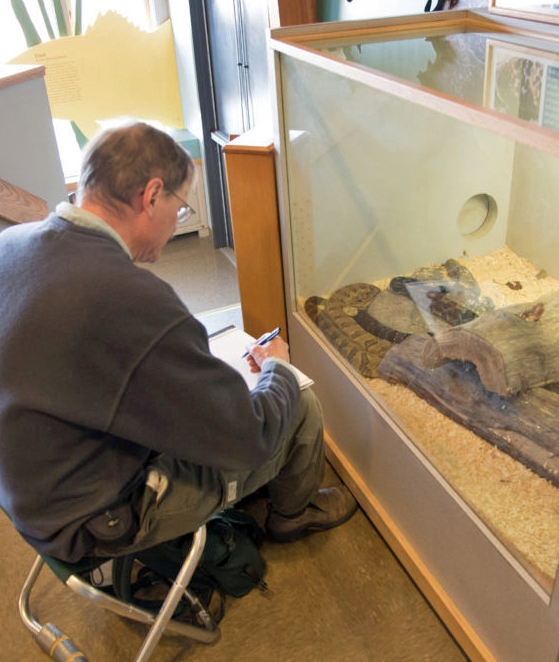
Timber rattlesnakes are endangered in Massachusetts and persist at only a handful of widely scattered sites in the state – mostly in mountainous areas. There is a small population in the Blue Hills Reservation, but they are reclusive animals and seldom encountered. They pose virtually no danger to the public, in fact, only one person has ever died of snakebite in Massachusetts, and that was over 200 years ago!
I have not yet painted a snake for this residency, so this is a good opportunity, and the snake is a very cooperative model – I don’t believe it moved once during the time I worked on my picture! I decide to indicate a natural setting for the snake and substitute a suggestion of leaves, rocks and twigs in place of the wood shavings in its enclosure.
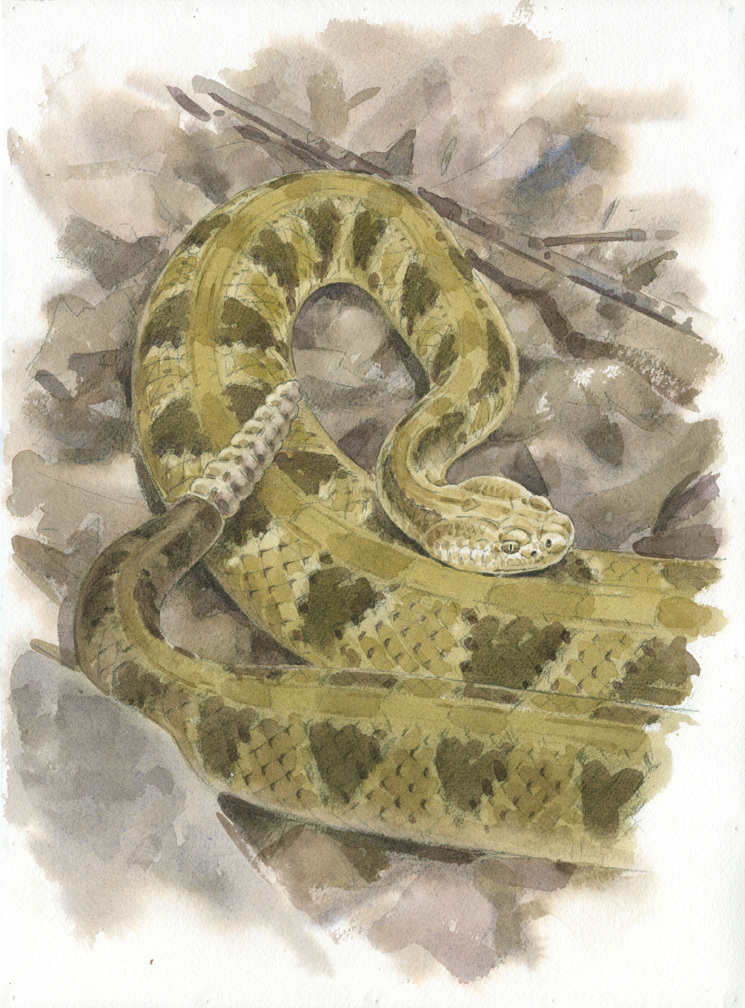
Timber Rattlesnake, wartercolor on Arches cold-press, 14.25″ x 10.25″
Before leaving Trailside, I go back outside and check the snowy owls one more time. To my delight, the paler bird is sitting atop a natural perch in the center of the enclosure.
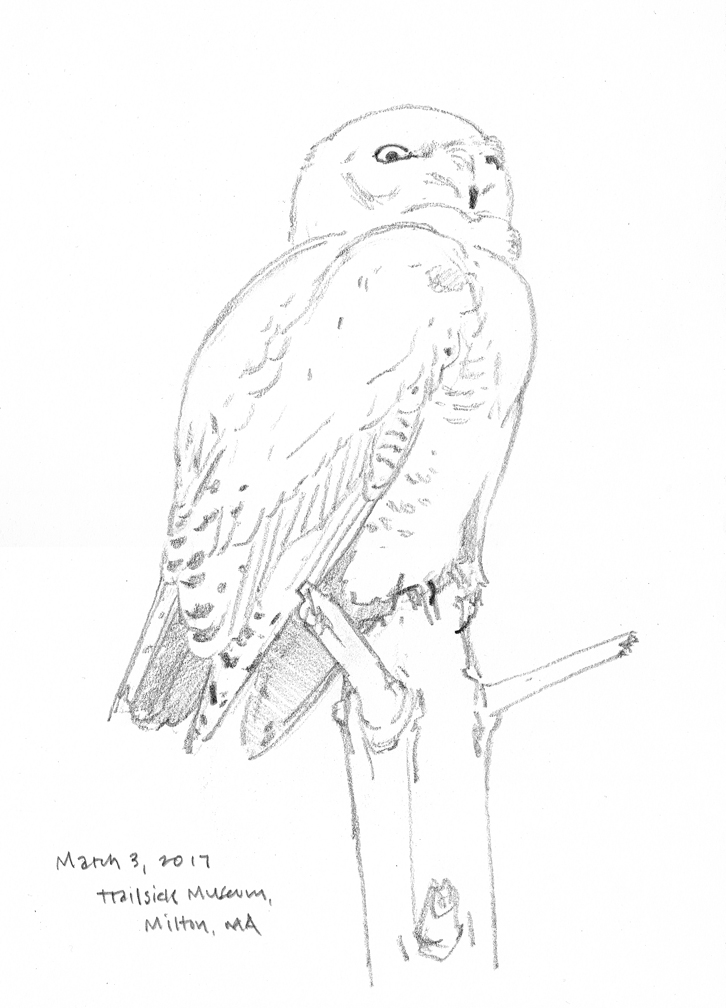
Snowy Owl sketchbook study, pencil, 9″ x 12″
It’s a much more dynamic pose than the birds made on the ground, so I make a careful drawing that I use later to develop this watercolor.

Snowy Owl at Trailside, watercolor on Arches rough, 16.25″ x 12.25″


